Overview/Brand Overview
Over the last decade or so, the world of touring boots has evolved into a relatively healthy marketplace with numerous options to fit the needs of most ski tourists. On the lighter end of the spectrum, we have been faced with the choice of super light but compromised performance, with a 300-400g weight penalty and the ensuing lack of ROM to bump up to a heavier boot. Ten years ago, this choice was well represented by the Dynafit TLT6 or Vulcan, and more recently, the Technica Zero G and Scarpa Alien RS/F1LT/etc. As the touring market grows, we are blessed with some excellent “filler” within the ski performance-ROM continuum.
In hindsight, the original model to fill this Goldilocks position was the Scarpa F1. For years, I resisted. Sure, a beefed-up two-buckle boot would be great as a one-boot quiver, but as I’m sure many readers realize by now, I’m more in the three-plus boot quiver category these days. My view was that I didn’t need an in-between boot because I had beefy boots, light boots, and race boots–no crossover necessary. This winter, a few boots came through the THR gear headquarters that totally changed my perspective. I seem to have a higher tolerance than many for skiing 1kg boots like the Zero G Peak with most skis on most days, which has led to my beefy boots gathering dust, generally, as a low friction high-ROM boot becomes my usual, and I lose tolerance for the friction and clunkiness of more robust boots. Enter the Backland XTD, a low friction, low fiddle factor boot with more mass and suspension than my beloved 1kg boots.
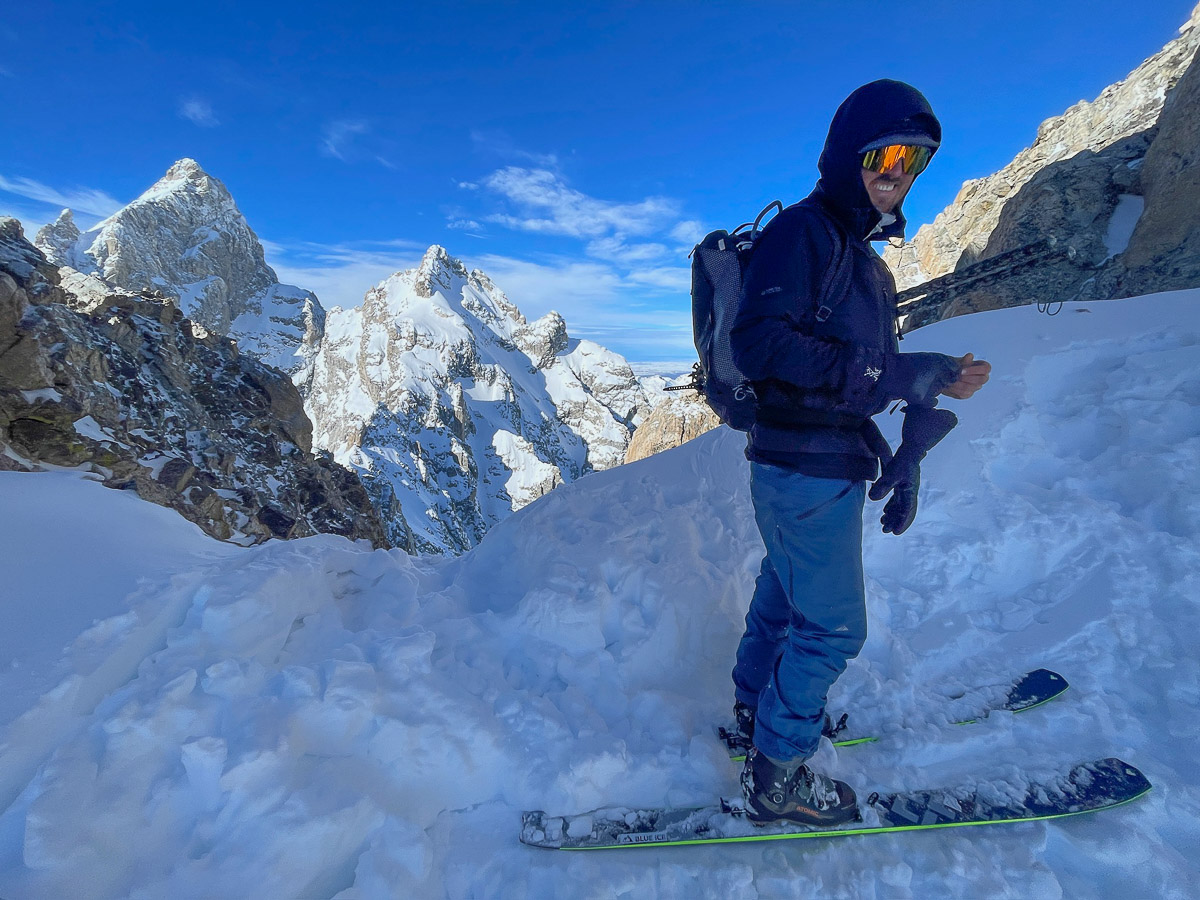
I’ll admit to being a bit put off by the stated last/fit of the Backland XTD, which was touted as wide (102mm) and medium volume. I had concerns about whether I could make the Backland XTD work for my low-volume feet. More on this later, but they are working splendidly. I was motivated to make them work as the design premise is immediately intriguing, with essentially the same style as a 1kg, two buckle model, just with a generally more reinforced build.
Design Highlights
The Backland XTD fits into what we have coined the “2+ buckle” category. This is our designation for the boots floating between the 1 kg category (think F1LT and Zero G Peak) and the Beefy or Freeride touring category (Scarpa Maestrale, Zero G Tour Pro, etc.). Within this category, the Backland XTD warrants comparisons with models like the Fischer Transalp Pro, La Sportiva Skorpius, and perhaps even the Scarpa F1XT.
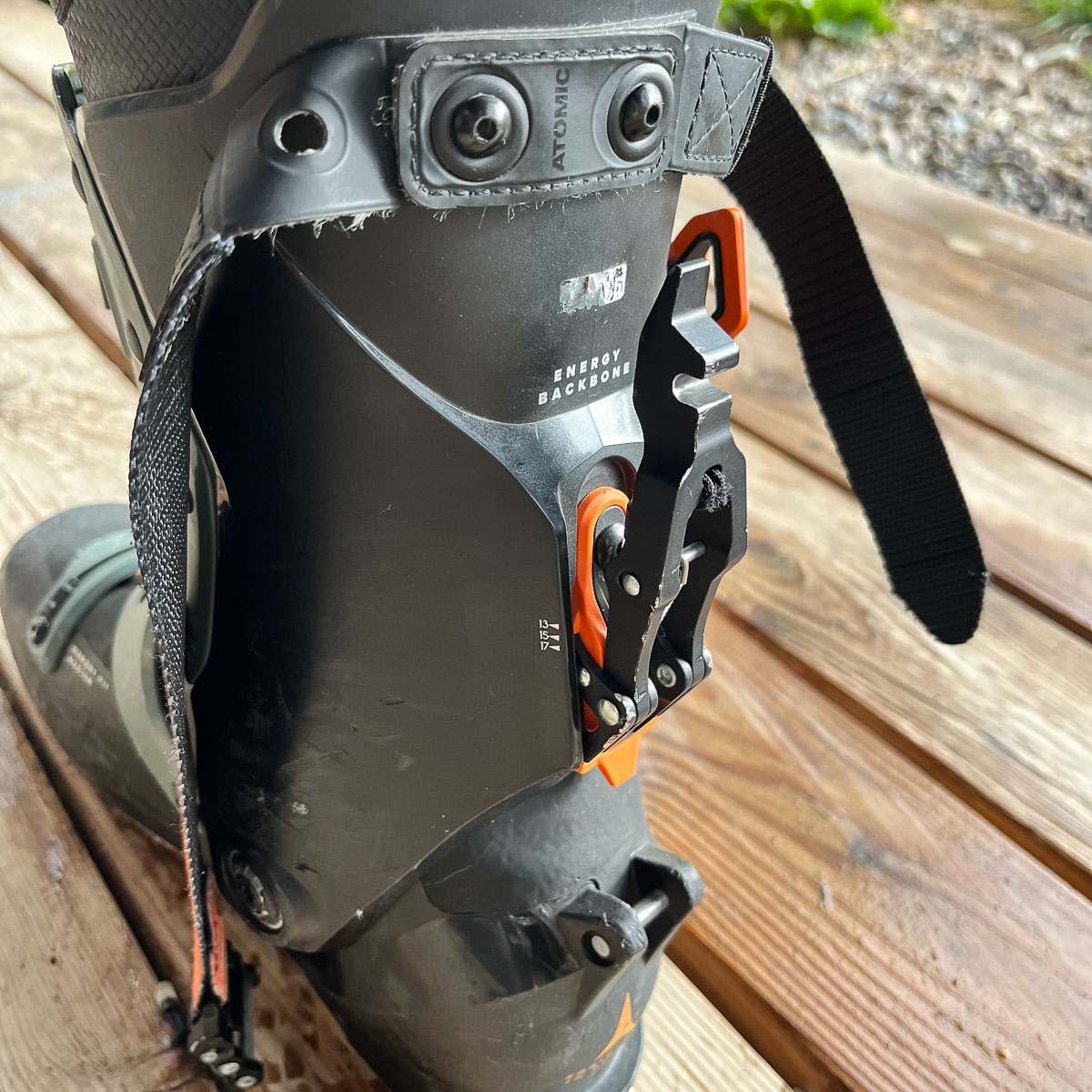
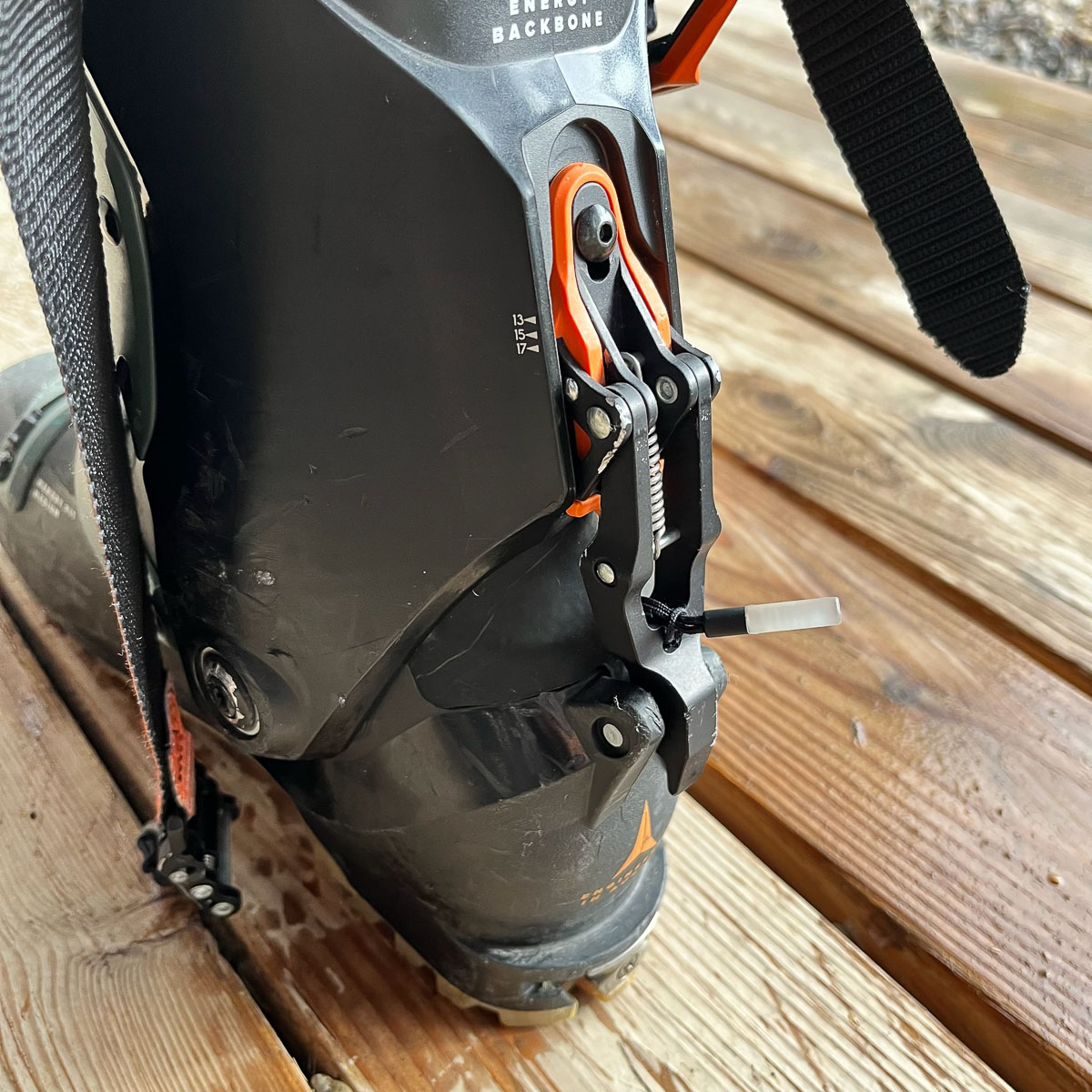
The layout of the Backland XTD will be familiar to many. A lower Z buckle is reminiscent of either a Mastraele or many 1kg boots and seems like a great application. While it doesn’t do a great job of locking down my heel, it provides even pressure over the forefoot and does a good job of “connecting” the gap in the lower shell to prevent bowing and collapsing, which is the downfall of many lightweight boots’ ski performance. Up top, a single wire buckle (with a stiff wire rather than cable) and a cam buckle operated power strap lock in the upper cuff. A bayonet walk/ski mechanism rounds out the hardware side of things.
For those keeping track, that ends up being a four-step transition for me: Two buckles to adjust/close, a power strap to tighten, and a bayonet to flip. While it isn’t a super sleek transition, it is the same process as lighter-class boots like the F1 XT or Zero G Peak. It feels much more streamlined than the Zero G Tour Pro, both because there are fewer steps and because the stiff wire buckles feel more user-friendly than the cable/catches of the Technica models.
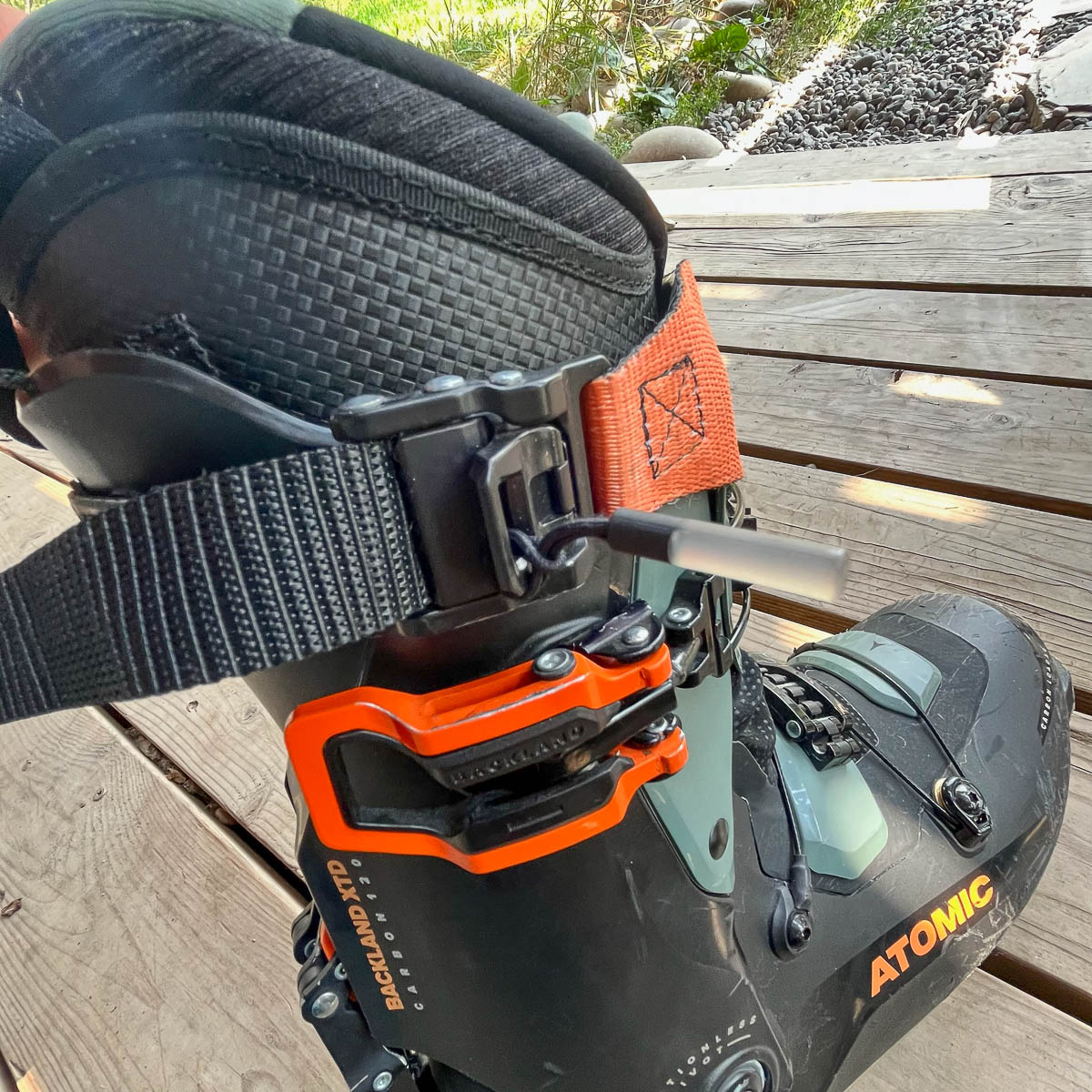
The Backland XTD is available with an ISO 9523 (touring norm) sole or a GripWalk sole for easier alpine binding compatibility. The XTD seems a little on the light side for 50/50 resort use. Still, it’s nice to have the option for someone looking for easy compatibility for occasional resort use–maybe the best case I can think of for the Gripwalk model is for traveling someplace like Japan or the Alps, with the plan to mostly tour, but perhaps bring/demo alpine skis for some lift-served skiing? I opted for the ISO 9523 sole, which has a nice rubber sole and natural rocker that feels natural walking and is compatible with all tech bindings as well as MNC norm alpine bindings, including something like a Shift or Duke PT.
From a durability perspective, an unfortunate necessity is the stretch gaiter that covers the open instep on the Backland XTD. I have yet to use a gaitered boot that holds up to much heavy use, and it significantly complicates removing/inserting the liner (I would highly recommend a forced air boot dryer rather than removing the liners each use). While I’ve decided that it’s worth sucking it up, gaiters generally drive me crazy in an expedition setting, where I end up wrestling the (hopefully) dry liners back into a cold shell in the tent vestibule in the morning, usually further tearing and or folding up the gaiter in the process. Brrr. That being said, the XTD gaiter is still in great shape after a season of use—I’ll attribute this to mostly keeping the liners in the shell day to day, but the TPU reinforcements and bonding adhesives seem to be holding up really well
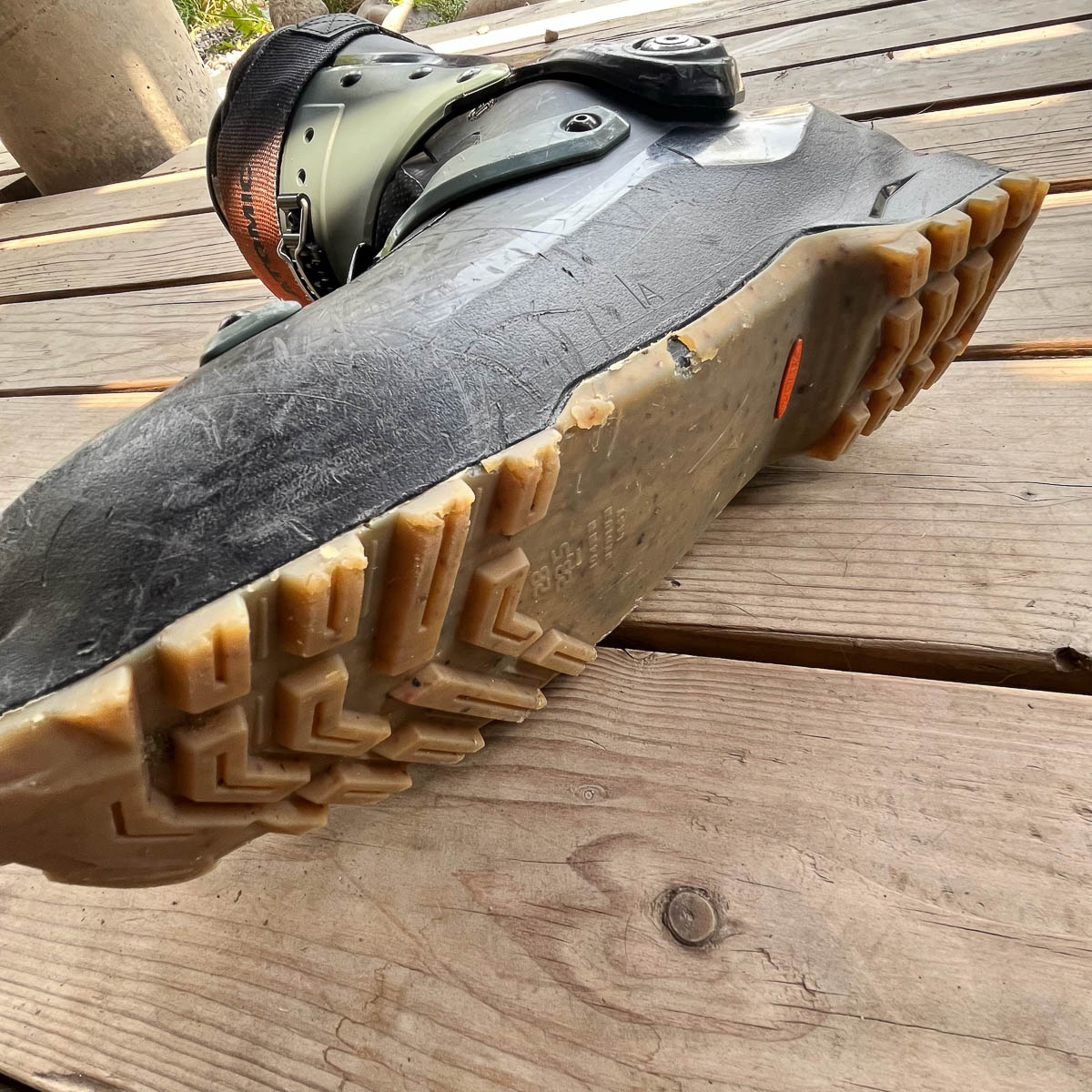
Fit and Bootfitting
As I stated, I was disappointed to see the last width/volume when the Backland XTD was announced. Despite this, I have had great luck making the Backland XTD work for me, fit-wise. I have a low instep, narrow heel and midfoot, and a somewhat wider area at the base of my toes (tailors bunion) that requires a small punch in the Alien RS (and F1 LT/XT) clog, as well as a tiny punch in the Zero G Tour Pro. Out of the box, I molded the stock liner with the buckles quite loose, added my slightly thicker medium cushion Sole insole, and had a great fit for the first 10-15 days out. The instep buckle provided plenty of instep pressure, and the width felt reasonable, but I was pleasantly surprised not to be swimming in extra width/volume. After 15 days or so, I added a thin shim under the liner and continued to have an excellent fit that is relatively comfortable without excess slop or movement while locked down to ski. The heel cup is a touch wide, which is a complaint I have with most boots I try. Heel lift wasn’t an issue in ski mode, but with activities like front pointing in crampons, I struggled a bit to lock down my skinny heels.
The forward lean is widely adjustable with a few bolts and a sliding walk mechanism —it has positions for 13, 15, and 17 degrees. Fifteen degrees feels great to me—a little more forward than Technica’s 12/13 degrees, but still familiar enough coming from those more upright models.
Atomic uses their MemoryFit system here, which means the shell and liner can be heat molded, and the shell can expand and mold to some pretty wide/boney/odd foot shapes. For some friends who struggle with foot issues, MemoryFit seems to be the gold standard in easily modifiable touring boot shells. While I didn’t need any shell work here, I would visit an Atomic dealer with a good boot fitter to guide me through the shell-baking process.
The stock liner is among the best “in-house” liners I’ve used (Scarpa’s Intuition models are still the absolute winner here). The Atomic liner has a quality feel and dense foam, aside from the Achilles, which has a stretchy neoprene/lycra flex zone. The cuff and tongue have a medium volume and firmer overlays that play nice with the upper cuff movement (no catching/clicking in walk mode). The forefoot has some mesh with perforated foam that dries pretty quickly. Overall, it has been excellent and doesn’t seem to have been built with a weight goal at the forefront (it’s a few grams heavier than an Intuition Tour Tongue in the same size). I have continued to use the stock liner for ~50 days, and the liner shows only minimal wear and tear. My only complaint is the tongue interface over the forefoot has a bit of a bulky seam and minimal overlap that sometimes puts a bit of pressure on my instep under the forefoot buckle.
Field Testing
I used the Backland XTD for close to 50% of my ski days this winter. It is the heaviest boot I have skied consistently over the last free winters, which adds a valuable data point to the idea that ROM and free range of motion trump weight. Honestly, between the Zero G Peak and the Backland XTD, my main boots this winter, the difference in ROM and friction would be hard to decipher in a blind test. The XTD is leagues better than the Zero G Tour Pro and marginally better than the Dynafit Ridge Pro and Fischer TransAlp Carbon. There may be a few degrees less absolute ROM at the end of the range, relative to something like an F1LT/XT or Backland Carbon, and similarly a hint more friction across that range of motion, but in practice, the Backland XTD walk mode is impressive.
Locking things down into ski mode, the Backland XTD continued to impress. While it lacks the overall rigidity of something like a Zero G Tour Pro, the flex feels progressive, stiffening as you flex deeper. It never elicits the folding or buckling sensation that sometimes occurs with light, open-throated boots. I could see a more powerful and aggressive skier coming from a four-buckle model, feeling like the Backland XTD lacked absolute stiffness. But, coming from similar or lighter boots, it feels like a great upgrade in suspension and progressive flex. For my more neutral stance (perhaps owing to my years-long love affair with the Alien RS and reverse camber skis), the Backland XTD felt more damp and offered a more plush experience in variable conditions than the Zero G Tour Pro. Relative to the new Dynafit Ridge, the Backland XTD felt less stiff and damp overall—the Ridge is really impressive in these metrics.\
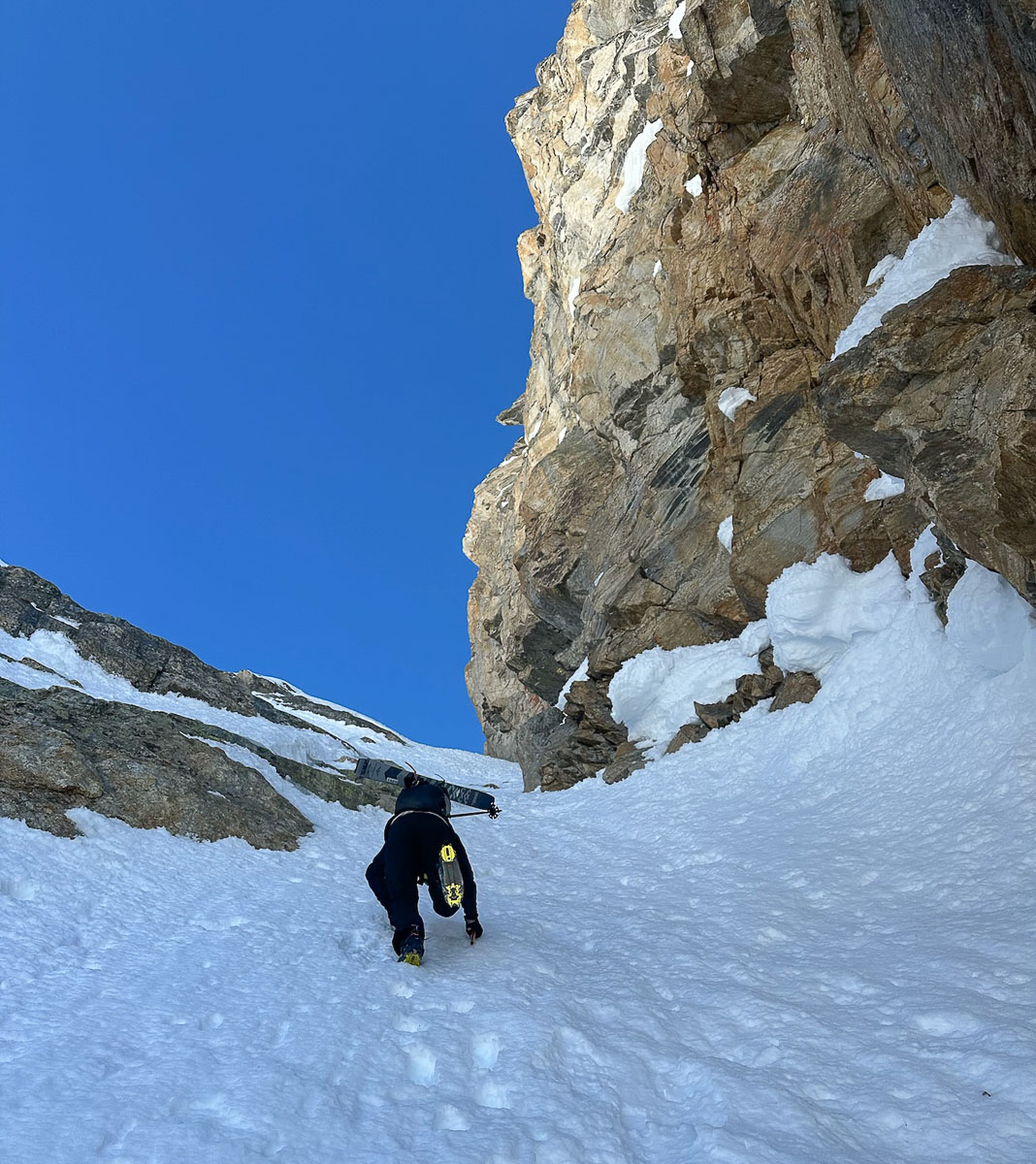
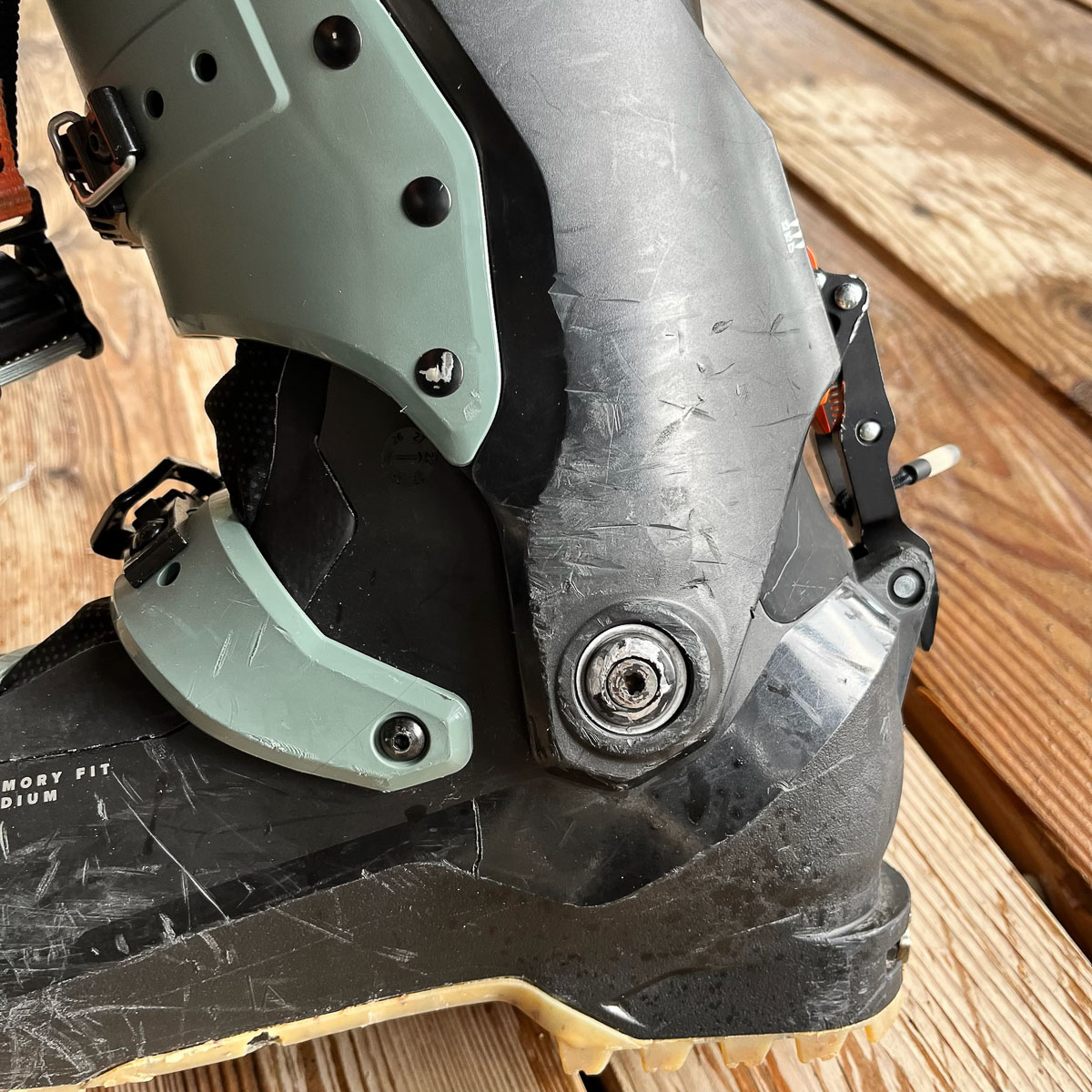
I paired the Backland XTD with various skis, including the Black Crows Solis and Draco, Moment Deathwish Tour 104, and Heritage Labs BC110. They had no trouble driving and feeling in control with the bigger skis. They were a perfect match for the Solis in high-consequence spots. I often chose the Backland XTD when I expected more challenging conditions; that’s where they shined over the Zero G peak. I am a fan of light boots and big skis. I’m also tuned into the limitations of such pairings. The Backland XTD didn’t struggle with torsional rigidity or getting overpowered/folding in variable snow on some big, long skis like the 189cm Draco. One issue this big and heavy ski testing may have exacerbated is play in the cuff pivots. This issue is well documented in the TGR Forum thread on the Backland XTD, and while it seems fixable with new rivets, it’s definitely a pain and a common issue among many modern touring boots. My pivots have about 3 mm of vertical play and 1mm fore-aft. It is not a deal breaker, but it is noticeable if I pay attention while skiing.
Aside from the pivots, the boots are holding up well. The lower shell and outsole have some scuffs and a few chunks missing, but they are holding up as expected. The buckles seem robust, and I appreciate the subtle touch of a brass bushing on the lateral anchor of the Z-buckle, which has kept the cable kink and knick-free. As mentioned, the upper buckle uses a stiff wire loop, and the wire “keeper“ is more akin to a wire gate carabiner rather than using small springs that break like a Scarpa Mastrale. The power strap uses a nice quick-release cam buckle. It isn’t as easy as the G-hook cam buckle combo from Technica, but it is pretty quick and provides good support for the upper cuff/liner. Overall, the hardware is a nice blend of simple and robust—I don’t expect broken buckles to be a common issue.
I had a few instances where the walk-ski mode lever got a little piece of snow/ice stuck in the notch, preventing it from seating all the way onto the bar. It was often subtle enough not to notice until I went to flex the boot, and it popped into walk mode – not ideal. While the fix is pretty easy (clean the thing out thoroughly!), it’s a little disconcerting to pop into walk mode on the first turn of a run. The small “latch“ that Technica employs to give a more positive engagement would be nice here.
Regarding other details, the Backland XTD shouldn’t have any major undiscussed quirks for most folks. They fit well with every crampon in my fleet and work with the Shift, Kingpin, and any Tech binding. The 13-17 degree forward lean should work for most skiers, and the gaiter’s durability, snow-proofing, and breathability are pretty darn good. The Skywalk sole seems like a sufficient balance of sticky and durable—it never felt slick on rock or in parking lots, and it held up as well as any of the Vibram soled boots I’ve used
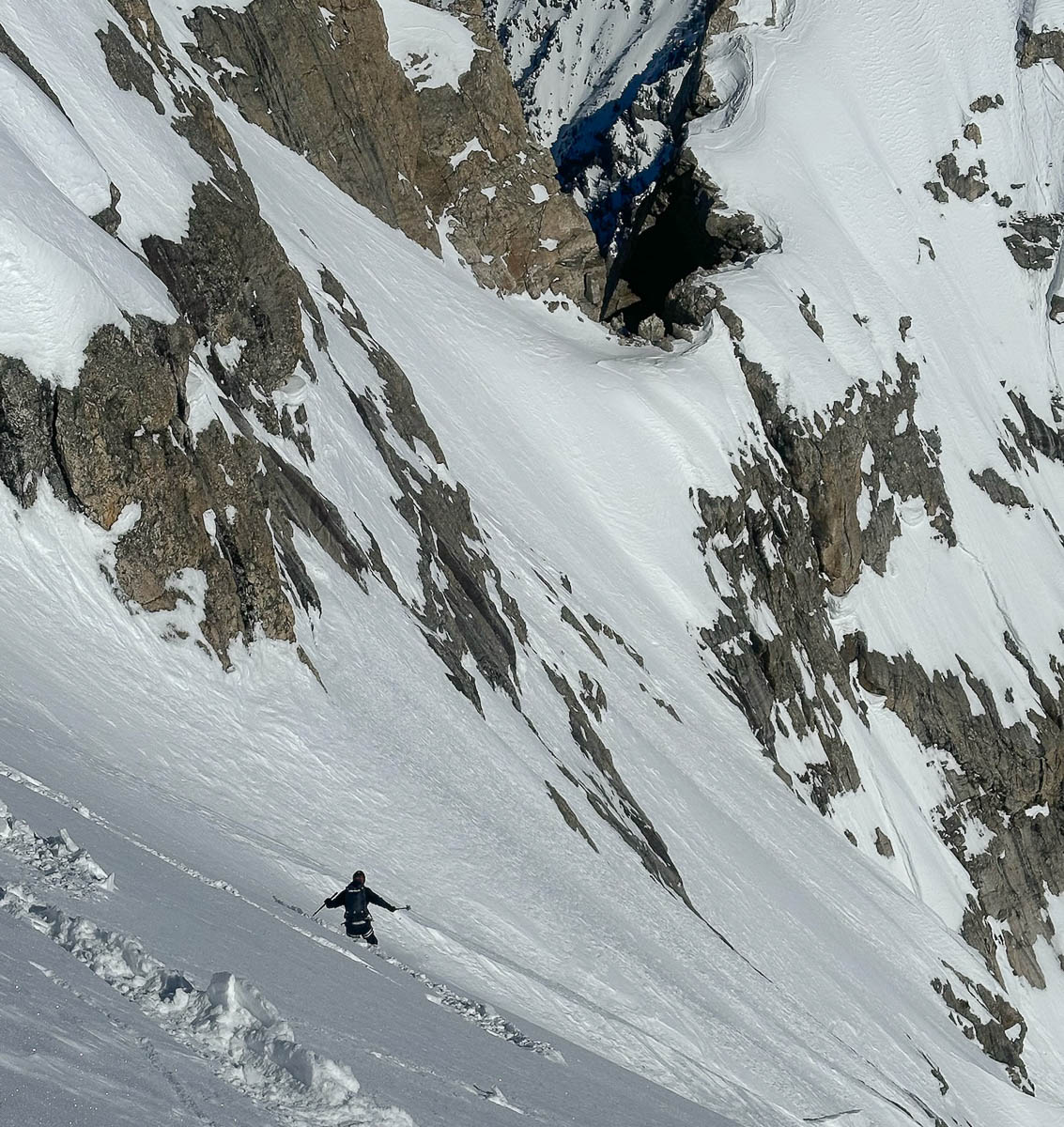
Conclusion
Final thoughts—who would you recommend these boots for or not? How will they/won’t they fit into your quiver?
Until something else comes along that really knocks it out of the park, the Backland XTD looks like it will be a go-to “beefy” boot for my quiver. Aside from my occasional lift-served jaunt, I can’t imagine a time I would reach for something heavier/stiffer. These would also be a top choice as a “travel” boot for a mostly touring, occasional lift-assisted trip somewhere like Chamonix or Hakuba. In the same vein, these would be an excellent choice for a ski tourist in the market for a one-boot quiver—they may be the best walking, reasonably light boots that I would recommend to someone with a variety of skis, skiing in a variety of conditions, as a one boot option.
Fit is certainly a crux regarding who the Backland XTD may work for. It would be awesome if Atomic made the Backland XTD in the Magna, Prime, and Ultra lasts like they do for the Hawx XTD. While I was pleasantly surprised to be able to do the fit work, someone with both narrow (I have a medium-width forefoot, at least) and low-volume feet and heels would be best looking elsewhere. Meanwhile, folks with wider and higher volume feet will likely enjoy the roomy last.
Overall, I enjoyed skiing and especially walking in the Backland XTD. It reopened my eyes to the pleasure of skiing a somewhat heavier and more damp boot without the burden of a poor walk mode that has often left me feeling like the heavier boot isn’t worth it. Instead, I often asked myself if taking out the lighter boots was worth it, given how good the Backland XTD walked.
Specs
Size Range: 22/22.5 – 30/30.5 (Good on Atomic for making a true 22!)
Total Weight: [28/28.5] 1564g (as skied, with shims, custom insole, etc.)
Shell Weight: 1175g
Liner Weight: 310g (no insole)
Sole Norm/Compatibility: ISO 9523 (Touring/MNC norm)
Materials: Carbon loaded Grilamid
Fitting Notes: MemoryFit, removable boot board
Price: $899.00

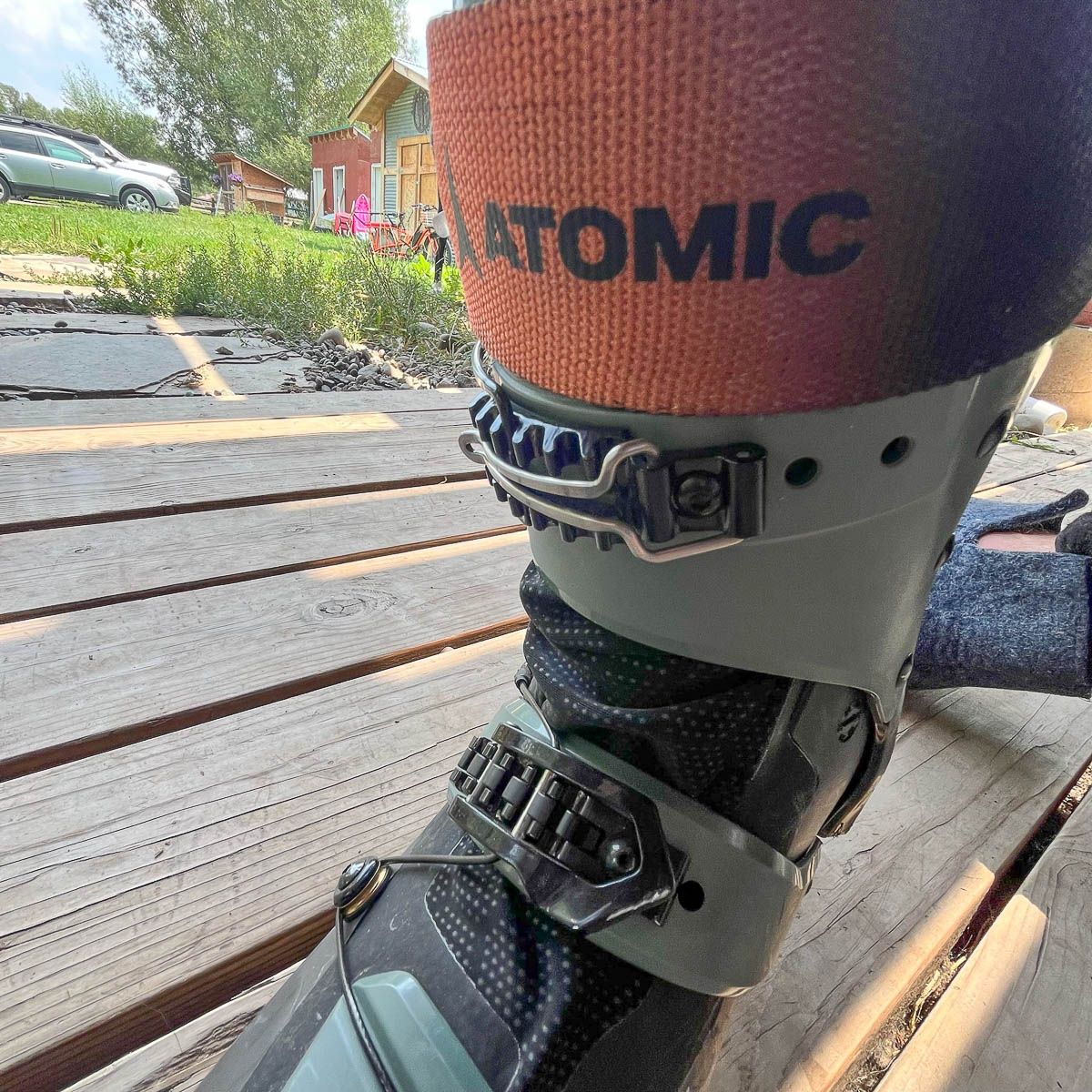




Leave a Reply
You must be logged in to post a comment.